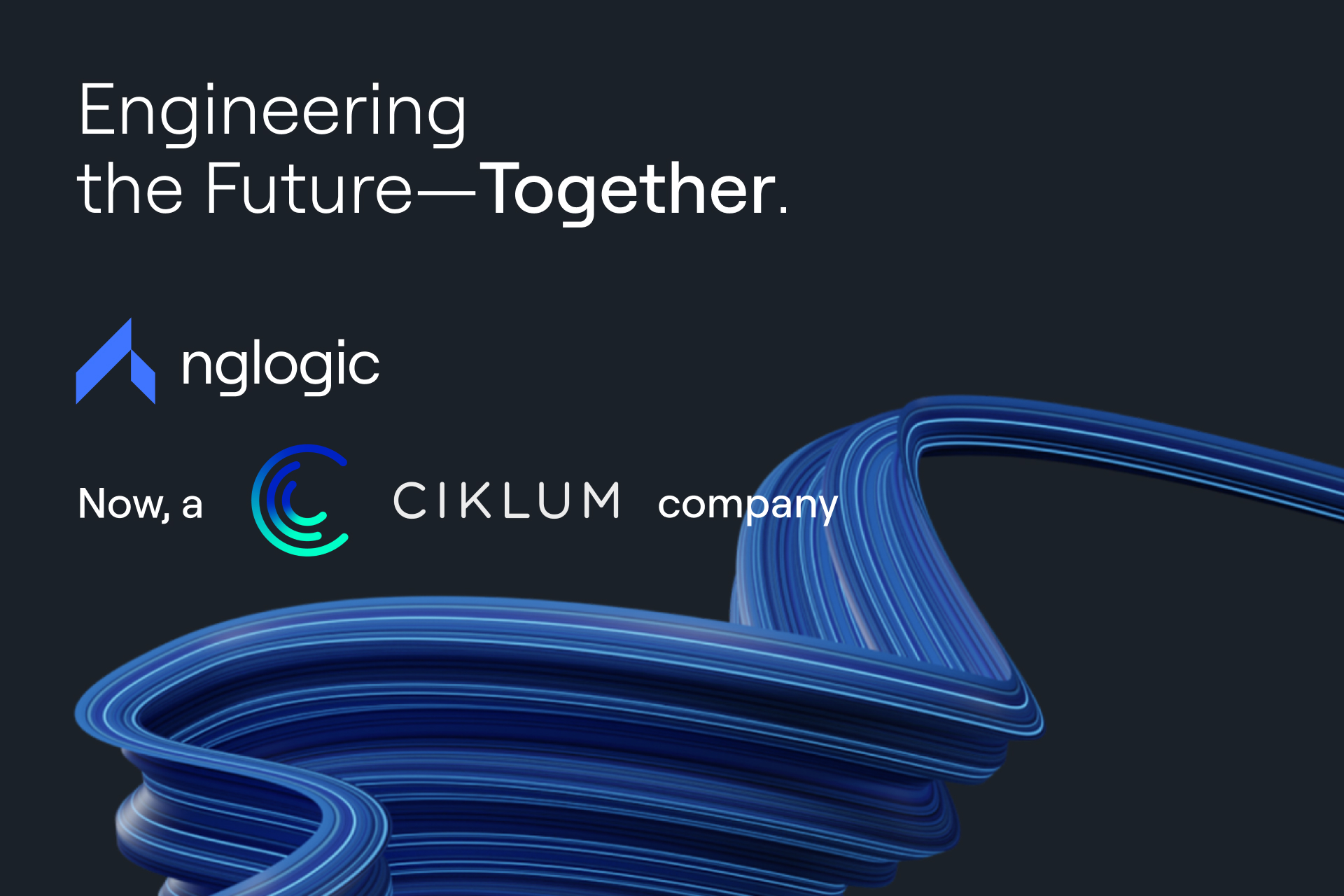Enterprise cloud computing is the use of cloud computing technology by businesses, organizations, and other entities to store, manage, and process data. This technology allows businesses to access a wide range of computing resources in a highly secure and cost-effective manner. Cloud computing helps businesses reduce their IT costs, increase scalability, increase agility, and improve collaboration. Enterprise cloud computing solutions range from Infrastructure as a Service (IaaS) to Platform as a Service (PaaS) to Software as a Service (SaaS).
Benefits of enterprise cloud computing
Cost Savings: One of the biggest benefits of cloud computing is the cost savings associated with it. By outsourcing IT, companies can reduce their costs related to infrastructure, hardware, software, and personnel.
Scalability: Enterprise cloud solutions are highly scalable and can accommodate increasing demand in a cost-effective manner. Companies can easily scale up or down their cloud usage without the need to invest in additional hardware or software.
Security: Cloud solutions are highly secure with enterprise-level encryption and authentication protocols, making them much more secure than traditional IT systems.
Improved Efficiency: Cloud computing solutions can help improve operational efficiency by automating mundane tasks and reducing manual intervention.
Flexibility: Enterprise cloud solutions can be accessed from anywhere, making it easier for companies to coordinate their teams and ensure collaboration across different teams and departments.
Increased Collaboration: Cloud solutions enable companies to collaborate more effectively by providing real-time access to data, documents, and applications. This increases the speed of decision-making and ensures that everyone is on the same page.
Low Maintenance: Since the cloud provider is responsible for the maintenance and upkeep of the system, companies do not have to worry about managing and maintaining the IT infrastructure. This helps to reduce IT costs and increase focus on core business activities.
Improved Disaster Recovery: Cloud solutions have built-in disaster recovery capabilities that ensure that data is backed up and recoverable in the event of an outage or disaster. This helps to minimize operational downtime and the risk of data loss.
Improved Mobility: Cloud solutions allow companies to access their data and applications anytime and anywhere. This helps to increase the productivity of mobile employees and ensures that teams can stay connected and collaborate from any location.
Faster Time-to-Market: Cloud computing solutions enable companies to launch their products and services faster as they do not have to wait for the hardware and software to be set up. This helps to improve customer service, increase customer satisfaction and accelerate the growth of the business.
What components make up an enterprise cloud strategy?
These are the key components that make up an enterprise cloud strategy. Companies should ensure that they have a comprehensive strategy in place to ensure that their cloud deployment is secure, reliable, and cost-effective.
Private Cloud infrastructure
Private cloud, also known as on-premises cloud, refers to cloud computing services that are managed and hosted on the customer’s local IT infrastructure. The customer owns the hardware, software, and data, which they have full control over. Private clouds are typically deployed on-premises, in a dedicated data center, or in a colocation facility. Private clouds provide customers with the flexibility to customize their cloud environment and have full control over their data and applications. Private clouds are often used in regulated industries such as healthcare and finance, where data privacy and regulatory compliance are of utmost importance.
Public Cloud services
The term “public cloud” refers to cloud computing services that are fully managed and made available to the general public by a third-party provider. Public clouds are available over the internet, and customers or end users usually pay for the services they use on a pay-as-you-go model. The public cloud is the most common type of cloud computing, and the most popular public cloud providers are Amazon Web Services (AWS), Microsoft Azure, and Google Cloud Platform (GCP). goog
Hybrid Cloud
The hybrid cloud is a combination of public and private cloud services. It provides customers with the flexibility and scalability of a public cloud while allowing for the privacy and control of a private cloud. The hybrid cloud is often used for bursting, which is when a customer quickly scales up their IT resources to meet a sudden demand. For instance, a company may use a public cloud for web hosting during peak traffic times and then scale down to a private cloud during periods of lower demand. The hybrid cloud also provides customers with the ability to transfer workloads between public and private clouds, allowing for easier management of resources.
Cloud Security
Security is a critical component of any cloud strategy. It is important to ensure that your cloud infrastructure is secure and compliant with industry standards and regulations. Cloud security should include measures such as data encryption, identity and access management (IAM), and secure data transfer protocols. Additionally, companies should use a comprehensive cloud security solution to monitor and protect their cloud infrastructure from threats.
DevOps
DevOps is a set of practices that enables organizations to rapidly develop, deploy and manage applications. DevOps enables organizations to automate the entire software development life cycle, from code commit to deployment. This helps to reduce time-to-market and improve the quality of the software. Additionally, DevOps helps to ensure that cloud applications are secure, reliable, and compliant with industry standards.
Cost Management
Cost management is an important component of any cloud strategy. Companies need to ensure that their cloud costs are kept in check and that they are not spending more than they need to. Cost management tools such as Cloudability can help to track and monitor cloud expenses, identify areas of inefficiency, and optimize cloud costs. Additionally, organizations should use cost comparison tools to compare the costs of various cloud providers and services.
Disaster Recovery
Disaster recovery is a critical component of any cloud strategy. Organizations should have a plan in place to ensure that their data and applications are protected in the event of a disaster. Cloud disaster recovery solutions can help to quickly restore applications and data in the event of an outage or failure. Additionally, organizations should use cloud-based backup solutions to ensure that their data is regularly backed up in a secure location.
Implementing an enterprise cloud computing strategy
Develop a clear cloud strategy
Before taking any steps towards adopting a public cloud, organizations must develop a clear cloud strategy. This includes understanding the goals of the organization, the types of services they need, the security and compliance requirements, and how they will manage and monitor the public cloud services.
Implement a cloud-first mindset
Organizations should move away from a traditional, on-premise mindset and adopt a cloud-first mindset. This means that all new services and applications should be evaluated for their suitability for the public cloud, and the cloud should be the first option for any new project, instead of the last.
Take advantage of cloud-based services
Organizations should take advantage of the vast array of cloud-based services offered by public cloud providers. These services can include storage, application hosting, managed services, analytics, and more.
Invest in cloud security and compliance
Security and compliance are of paramount importance when it comes to public cloud adoption. Organizations should invest in the tools and processes necessary to ensure that the public cloud services they use are secure and compliant.
Monitor and manage cloud usage
Organizations should monitor their public cloud usage and ensure that they are not overspending on services or using services they do not need. They should also have a process in place to manage and control user access to public cloud services.
Educate employees
Finally, organizations should ensure that all employees are aware of the public cloud strategy and the associated risks. This includes educating them on best practices for security and compliance, as well as how to properly use cloud services.
FAQ
What is the Difference Between Enterprise Cloud and Public Cloud?
The main difference between enterprise cloud and public cloud is in terms of who owns and manages the cloud infrastructure. In an enterprise cloud, the cloud infrastructure is owned, maintained, and managed by the organization itself, while in a public cloud, the cloud infrastructure is owned and managed by a third-party provider, e.g Microsoft Azure or Google Cloud. Enterprise cloud offers a higher level of control, security, and customization compared to the public cloud, which is typically more affordable and easier to use.
What is the Difference Between Enterprise Cloud and Hybrid Cloud?
The main difference between an enterprise cloud and a hybrid cloud is the level of control. An enterprise cloud is a private cloud solution that is owned, managed, and hosted by the organization itself. The organization has complete control over the cloud and can customize it to meet the specific needs of the business. With a hybrid cloud, the organization uses both public and private cloud solutions to meet its needs. The public cloud is owned and managed by a third-party vendor, while the private cloud is owned and managed by the organization. The organization has limited control over the public cloud but can customize the private cloud to meet its specific needs.
What is the Difference Between Enterprise Cloud and Private Cloud?
The main difference between enterprise cloud and private cloud is that enterprise cloud is a cloud computing service that is used by a single organization, while private cloud is a cloud computing service that is owned, managed, and hosted by a third-party provider. Enterprise cloud offers organizations a secure, dedicated environment that is tailored to their specific needs, while the private cloud offers organizations a shared environment that can be accessed by multiple organizations. Enterprise cloud is typically more expensive than private cloud due to the higher levels of customization and security available.














 +1 (888)
413 3806
+1 (888)
413 3806